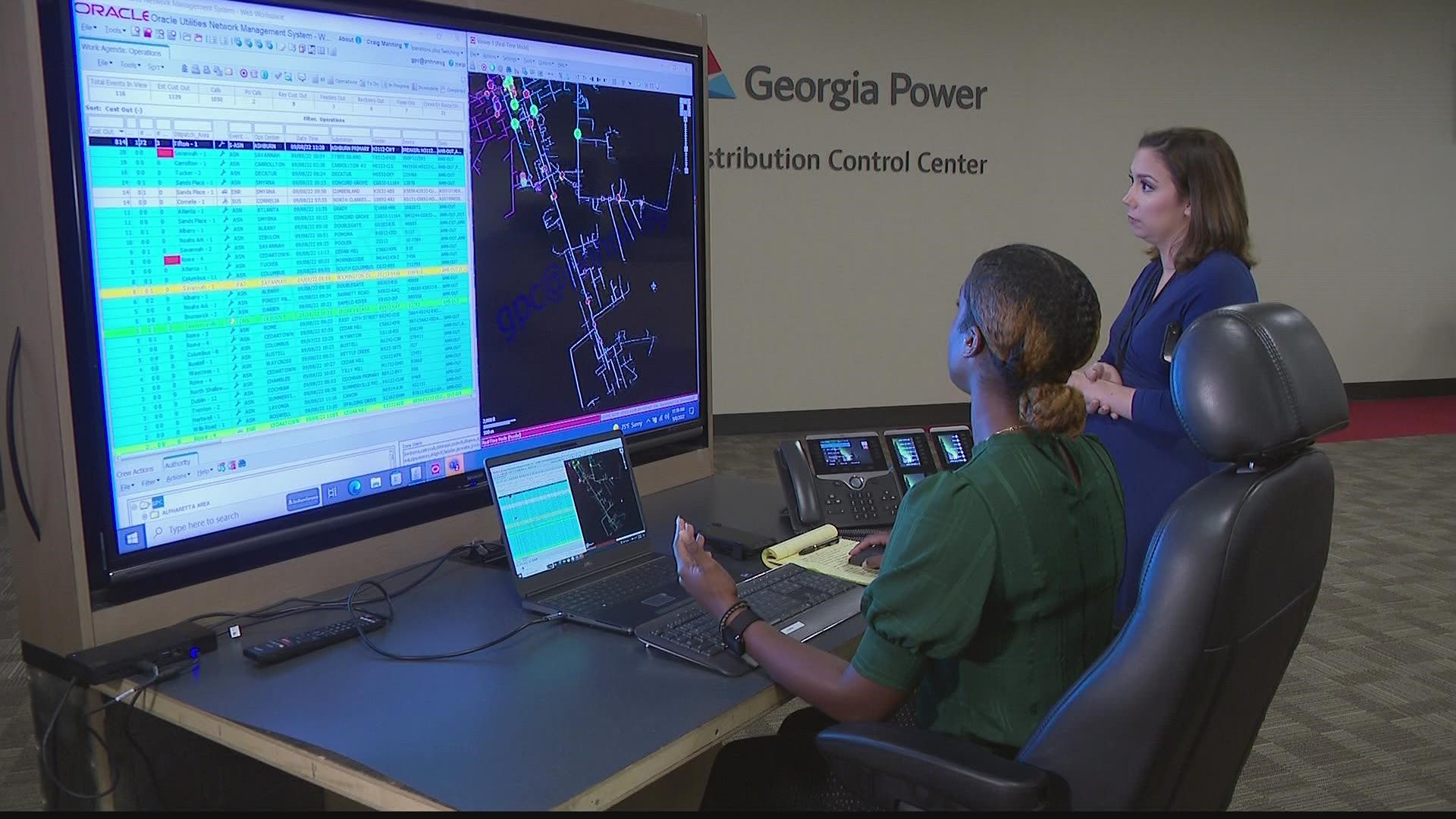ATLANTA — Power outages in Georgia after summer storms are less widespread and often shorter than several decades ago. This is thanks to new smart-grid technology.
For the first time ever, 11Alive was granted exclusive access into one of Georgia Power Company's Distribution Control Centers. This is a hub where that smart-grid technology and human intuition work in tandem to minimize power outages and dispatch line crews.
Georgia Power has invested billions in the last decade into smart-grid technology. This technology can cut down on the number of customers in a power outage and the total outage time. How?
What is this 'smart grid' technology?
In essence, it is a new technology that allows two-way communications between a utility company and its customers and assets in the field.
Twenty years ago, power companies would only know about your house being in the dark if you called them or sent in a paper ticket. Now, they can almost instantaneously know when your house is without power, who else is in the outage, and have an idea of where the source is for the outage (what piece of equipment may have broken or what line may be down).
Gwen Frazier, General Manager of Operations, oversees the five control centers around Georgia.
“We have invested $10 billion in the last 10 years to make our system more reliable and more resilient,” Frazier said.
That investment includes three main tech upgrades: smart meters in your home, which immediately let Georgia Power know when your service is out, Smart devices in the field, which pinpoint the source of the outage, and monitoring devices, which tell operators when equipment may need repairs so it can be fixed before it breaks.
“The smart devices give us all the information we used to be dependent on human people to tell us," Frazier adds.
To see this smart grid technology in motion is something else. We shadowed operator Navilla Paul, a three-year veteran with the company, as new outages were detected on the grid.
Operators like Navilla are like 911 operators for the power grid.
When asked how this smart grid technology aids her in her duties, Paul responded, "It helps you to get closer and minimize those outages."
The minimizing of outages she was talking about is referring to a facet of the system that was nothing short of fascinating. The grid is self-healing, meaning the network can start opening and closing devices (like turning a light switch off and on) during an outage to isolate the number of customers without power.
"This can help some people avoid a disruption in service at all," Frazier added.
On this particular day, weather wasn’t a huge factor with outages impacting just handfuls to dozens of customers at a time.
As new outages came in like a line in an excel spreadsheet, Navilla investigated it. She was able to look at the smart grid down to street level, and see which customers were without power.
The smart-healing component was able to already pull some customers from one circuit within the outage area and bring them power from another.
Paul was then able to see down to the house or business address what pieces of equipment could have caused the outage. After that, operators are able to dispatch a crew to that exact location. Because they know what type of equipment may have been impacted, that can also speed up the power restoration process.
On a day with pop-up thunderstorms, the outages can quickly jump to the hundreds or even thousands. This self-healing, smart grid technology is the biggest difference maker during this time of weather setup.
During larger-scale events like hurricanes and winter storms, the damage can often be more widespread and will take more of the human intuition to strategize and effort the power restoration process.
Then, Navilla puts the information into action.
She can further isolate an outage. Then, like a 911 operator, dispatches line workers to the source.
Who gets priority for power restoration?
Important public services, like hospitals, are given priority. After that, the goal is to restore power to the most customers as quickly as possible.
As Gwen Frazier explained, a great analogy for this is a hand:
“We go to the power lines that are serving the most people… so if you know what a substation is, the power lines that are coming directly out of a substation," Frazier said. "We start there and work out from there, just like you would the fingers of a hand… you start from the biggest part and you start moving out to the fingers and get everybody picked up until you’ve got everybody on.”
A team effort to turn the lights back on that much quicker. Often a thankless job, but sometimes Navilla receives a special thank you from a customer that makes her that much more proud of the important work she does.
“When we take our time to help those customers get the power back on… some of them are very, very appreciative,” she said.

